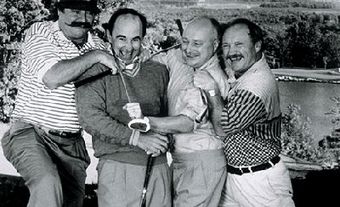Table tennis is played by 2 (singles) or 4 (doubles) players, normally indoors. Opponents face each other and hit the ball with a racquet, alternately, over a 6-inch (15.25 cm) net stretched midway across a 9 x 5 ft (274 cm x 152.5 cm) table. The celluloid ball makes a hollow sound that led to "ping-pong" as a common name for the game, although it could not be used officially for some time since it was a registered trademark. It first appeared in the late 19th century as an attempt to miniaturize tennis for play indoors. A pimpled-rubber racquet covering was developed in 1903, allowing for the development of spin on strokes. World championships have been held since 1926. The sponge racquet was introduced by the Japanese in 1952.
The Canadian Table Tennis Association was formed in 1929, with Québec as the founding provincial member and Ontario joining 5 years later. A long association with the Canadian National Exhibition began in 1936, when the first Canadian Table Tennis Championships were staged there. The CTTA operates a computerized rating system that allows any competitive player to be ranked, both provincially and nationally.
Canada's table-tennis stars of the 1930s were Paul Chapdelaine and J.J. Desjardins of Montréal. In the 1970s, Violette Nesukaitis, of Toronto, emerged as a strong international player. Winner of 4 North American open championships, she travelled to China in 1971 on a Canadian team, the first table-tennis team to be invited to that country. In 1973 she was ranked 3rd among Commonwealth women players. She retired in 1976.
In the 1990s 2 recent immigrants, Geng Lijuan and Johnny Huang, dominated Canadian table tennis. Both achieved top-10 world rankings and represented Canada at the Olympic Games in 1996 and 2000. Their best results were recorded in 1996 at Atlanta; Huang defeated the number one seed and defending Olympic champion to finish fifth overall in the men's singles; Lijuan attained a ninth-place finish.

 Share on Facebook
Share on Facebook Share on X
Share on X Share by Email
Share by Email Share on Google Classroom
Share on Google Classroom


